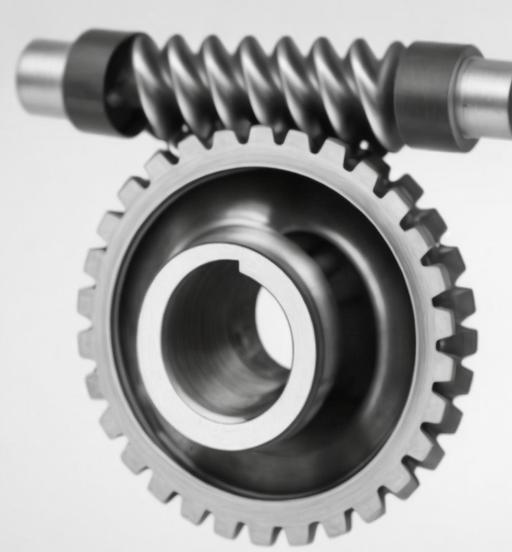Introduction

Worm gear is fundamental component in many mechanical systems, providing high torque transmission and efficient power transfer in a compact form. They are used in a wide range of industries, including automotive, aerospace, industrial machinery, and robotics. Recent advancements in materials, manufacturing processes, and technology have significantly impacted the design, performance, and application of worm gear. This article explores the emerging trends in worm gear applications across various industries, highlighting the latest innovations and their implications.
Technological Advancements
1. Advanced Materials
The development of new materials has greatly enhanced the performance and durability of worm gear. Advanced materials, such as high-strength alloys, composites, and specialized coatings, are being increasingly used to improve wear resistance, reduce friction, and extend the service life of worm gear.
Advantages
- Enhanced durability and reliability
- Improved performance under high loads and extreme conditions
- Reduced maintenance costs
Applications
- Aerospace systems
- High-performance automotive applications
Table 1: Advanced Materials in Worm Gear
| Material | Advantages | Applications |
|---|---|---|
| High-strength alloys | Increased load capacity, wear resistance | Aerospace, automotive |
| Composites | Lightweight, high strength | Robotics, medical devices |
| Specialized coatings | Reduced friction, enhanced durability | Industrial machinery, renewable energy |
2. Additive Manufacturing
Additive manufacturing, or 3D printing, has revolutionized the production of worm gear. This technology allows for the creation of complex geometries and customized designs that were previously difficult or impossible to achieve with traditional manufacturing methods.
Advantages
- Design flexibility and customization
- Reduced material waste
- Rapid prototyping and production
Applications
- Custom machinery
- Prototype development
Table 2: Additive Manufacturing Benefits
| Benefit | Description |
|---|---|
| Design Flexibility | Ability to create complex geometries |
| Customization | Tailored designs for specific needs |
| Rapid Prototyping | Quick iteration and testing |
| Material Efficiency | Minimal waste and optimized use |
3. Smart Manufacturing and IoT Integration
The integration of smart manufacturing techniques and the Internet of Things (IoT) has enabled real-time monitoring and optimization of worm gear systems. Sensors and data analytics tools are used to predict maintenance needs, improve performance, and reduce downtime.
Advantages
- Real-time condition monitoring
- Predictive maintenance
- Improved operational efficiency
Applications
- Industrial automation
- Smart factories
Table 3: Smart Manufacturing and IoT Integration
| Feature | Description |
|---|---|
| Real-time Monitoring | Continuous tracking of worm gear conditions |
| Predictive Maintenance | Anticipates and prevents failures |
| Operational Efficiency | Optimizes performance and reduces downtime |
Industry-Specific Applications
1. Automotive Industry
In the automotive industry, worm gear is used in various applications, including steering systems, differential gears, and power windows. The focus is on enhancing performance, reducing weight, and improving fuel efficiency.
Innovations
- Lightweight materials to reduce vehicle weight
- Enhanced gear designs for better performance and durability
Table 4: Automotive Worm Gear Applications
| Application | Recent Innovations |
|---|---|
| Steering Systems | Lightweight alloys, improved precision |
| Differential Gears | Advanced materials, optimized designs |
| Power Windows | Compact, efficient motor integration |
2. Aerospace Industry
Worm gear in the aerospace industry must withstand extreme conditions and high loads. The emphasis is on reliability, precision, and weight reduction.
Innovations
- High-strength, lightweight materials
- Advanced coatings for wear resistance
Table 5: Aerospace Worm Gear Applications
| Application | Recent Innovations |
|---|---|
| Actuation Systems | High-strength alloys, wear-resistant coatings |
| Landing Gear | Lightweight, durable materials |
| Control Surfaces | Precision gear mechanisms |
3. Industrial Machinery
Worm gear in industrial machinery are used for heavy-duty applications, such as conveyors, elevators, and manufacturing equipment. The focus is on durability, efficiency, and maintenance reduction.
Innovations
- Enhanced materials for extended service life
- Smart sensors for condition monitoring
Table 6: Industrial Machinery Worm Gear Applications
| Application | Recent Innovations |
|---|---|
| Conveyors | Durable materials, efficient designs |
| Elevators | High-load capacity, reliable operation |
| Manufacturing Equipment | Smart sensors, predictive maintenance |
4. Robotics
Robotics applications require worm gear that are precise, reliable, and capable of handling varying loads. The focus is on miniaturization, performance, and integration with control systems.
Innovations
- Miniaturized gear designs
- High-performance materials
Table 7: Robotics Worm Gear Applications
| Application | Recent Innovations |
|---|---|
| Precision Actuators | Miniaturized, high-precision gears |
| Autonomous Systems | Integrated sensors, smart materials |
| Industrial Robots | Durable, high-performance designs |
Future Trends and Developments
1. Nanotechnology
Nanotechnology is expected to play a significant role in the future of worm gear manufacturing. Nanocoatings and nanocomposites can provide exceptional wear resistance, reduce friction, and enhance overall gear performance.
2. AI and Machine Learning
Artificial intelligence (AI) and machine learning are poised to transform worm gear applications by enabling advanced predictive maintenance, optimizing gear designs, and improving manufacturing processes.
3. Sustainable Manufacturing
Sustainability is becoming increasingly important in gear manufacturing. Future trends include the use of eco-friendly materials, energy-efficient production methods, and recycling of materials to reduce the environmental impact.
Conclusion
The field of worm gear applications is experiencing significant advancements driven by technological innovations, advanced materials, and smart manufacturing techniques. These trends are enhancing the performance, durability, and reliability of worm gear across various industries. By leveraging these advancements, industries can achieve greater efficiency, reduce costs, and improve the overall performance of their mechanical systems. The future of worm gear applications looks promising, with continued innovations expected to further expand their capabilities and applications.
